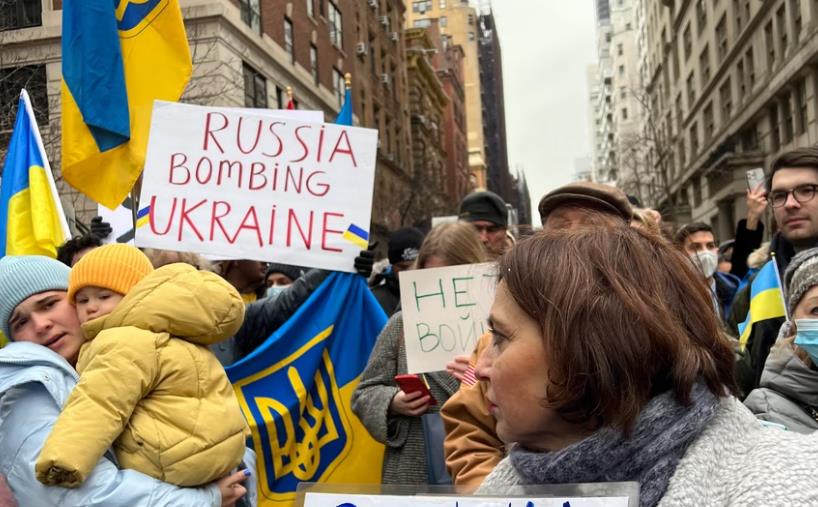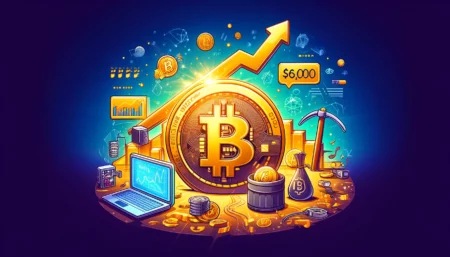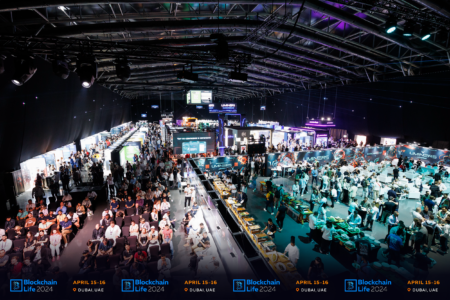The situation in Russia and Ukraine continued to heat up, affecting the market.
As a part of the entire financial market, cryptocurrencies are inevitably affected. Next, we will sort out how the Russian-Ukrainian conflict will affect the cryptocurrency market.
Cryptocurrency prices head for a reversal day
Global stock markets and cryptocurrencies ushered in a Black Thursday as Russian President Vladimir Putin decided to launch a military operation in eastern Ukraine.
On February 24, according to Coingecko data, BTC fell to a minimum of $34,740 per piece, the first time it fell below $35,000 since July 2021. The prices of other cryptocurrencies generally followed suit. The overall market value of cryptocurrencies has shrunk significantly.
However, this situation was reversed on the 25th. In the last 24 hours, Bitcoin BTC -0.88% has risen by more than 10% and once exceeded $39,000. ETH gained more than 12% in 24h to $2,629.
The price of USDT on Ukrainian cryptocurrency exchange Kuna rose nearly 5% as tensions between Russia and Ukraine intensified.
Also worth noting, according to data from CoinGecko, trading volume on Ukrainian crypto exchange Kuna has more than tripled as of Friday. Around $1.5 million in 24-hour volume were traded in Kuna on Thursday morning, which is now just under $5 million. Bitcoin is currently trading at a 7% premium on Ukrainian exchanges, suggesting that local demand has outstripped available supply since the attack. As of about 12:30 am today, bitcoin was trading at $41,554 on Ukrainian exchanges, $2,821 higher than the global $38,733.
Not long ago, the Ukrainian parliament passed a law to legalize cryptocurrencies.
“Digital gold” questioned
Many investors previously viewed bitcoin as a safe-haven asset as a hedge against global economic uncertainty and rising prices. During the Russian-Ukrainian conflict, Bitcoin’s sharp dive also called into question its title as “digital gold”.
Buffett opposed exchanging stocks for cash, gold and bitcoin during the war because he believed investing in companies was one of the easiest ways to build wealth over time.
According to Frank Holmes, CEO of US Global Investors, gold is the best asset in this highly stressed environment. Holmes said in an interview with Kitco News that gold is a safe haven asset in times of war and political tension, and there is a historical basis for that. He pointed out that the market should not use gold’s poor performance in 2021 as a reason to avoid the asset. Holmes acknowledged that while Bitcoin is emerging as an important alternative, it will take more time for the asset to prove its worth considering it is still a “young” asset class. However, Holmes believes that once Bitcoin overcomes several hurdles, including regulation, it will replace gold as a safe haven for people.
Ki Young Ju, CEO of crypto market analysis firm CryptoQuant, believes that as long as institutions like MicroStrategy continue to hold bitcoin, the asset’s “digital gold” narrative will continue to apply.
Bitcoin hashrate remains stable
According to the data of btc123.fans, the current computing power of the entire Bitcoin network is 195.38 EH/s, which has only dropped by 1.77% in the last 24 hours, and the computing power remains stable. Previous data showed that as of August last year, Russia had nearly 13.6% of the Bitcoin network’s computing power.
In addition, according to Bitnodes data, 165 nodes are working in Russia, and 46 nodes are still running in Ukraine.
Chip crisis
Under the epidemic, the supply chain of chip semiconductors is already fragile. Under the conflict between Russia and Ukraine, this situation is likely to be worse.
Neon gas is one of the indispensable raw materials for the light source of most mainstream lithography machines. Ukraine is the world’s largest exporter of neon gas, and its neon gas exports account for about 70% of the global market. Faced with the risk of supply disruptions, Samsung, SK Hynix, Intel and other manufacturers all said that their chip production has not been affected for the time being, benefiting from diversified sources of materials. TSMC, the world’s largest chip foundry, declined to comment “at this time.” As a key Dutch supplier to chip makers such as TSMC, Samsung Electronics, Intel, and other chip manufacturers, lithography giant ASML (ASML) has said it is looking for a “spare tire”.
However, most analysts believe that the impact of the situation in Russia and Ukraine on chip production will appear in the long run. As the demand for semiconductors rises, the global demand for semiconductor materials may continue to rise in the next few years. For the semiconductor industry, which relies on the cooperation of countries around the world, conflict anywhere is tantamount to affecting the whole body. Similar supply crises may only continue to be staged in the future.
Among these companies, Intel is developing the Asic Bitcoin mining machine. Previously, mining machine manufacturers Bitmain and Whatsminer formed strategic cooperation with TSMC and Samsung respectively. This also means that the potential chip crisis will inevitably affect the R&D and production of mining machines.
Actions of all parties: Bitcoin aid, DAO, and restricted mining all come together
Cryptocurrencies also represent a force in the Russia-Ukraine conflict.
On February 25, SBF, the CEO of crypto trading platform FTX, said on social media that $25 has been issued to Ukrainian users of the FTX platform. A day earlier, the SBF said that no one can predict the future, but we can do something good for the world.
After more than ten years of development, cryptocurrency donations have become more and more trendy.
A bitcoin wallet listed by a charity that claims to support the Ukrainian military has received more than 109 bitcoins worth about $4.195 million, according to Blockchain.com. The organization that raised the funds is called “Come Back Alive,” and the address currently holds 105 BTC, or about $4.039 million. The data shows that the addresses in question have been active since at least August 2021, but the vast majority occurred in February, with many in the past 48 hours.
2021 marked a breakthrough year for Decentralized Autonomous Organizations (DAOs), which went from being a crypto term to mainstream awareness, with a surge in the number of DAOs of all kinds and the amount of funds raised. Now the DAO has also appeared in the Russian-Ukrainian conflict to represent one side of the force.
Political activist and founding member of punk rock band Pussy Riot Nadezhda Tolokonnikova announced the launch of Ukraine DAO with members of Trippy Labs and PleasrDAO. Pussy Riot tweeted, “Our goal is to raise funds to donate to Ukrainian civic organizations to help those suffering from Putin’s war in Ukraine. We will buy an NFT with a Ukrainian flag.” According to Tolokonnikova The Drop will include 10,000 Ukrainian flag NFTs minted on Ethereum ETH -1.20%, and all proceeds will be donated to the Return Alive Foundation and the NGO Proliska. Additionally, a unique flag NFT will be released to allow larger contributors to participate.
It is also worth noting that the Ethereum community also reacted after Ethereum co-founder Vitalik Buterin publicly supported the Ukrainian side in the recent Ukrainian military operation. It is reported that FlexPool has announced that it will prevent people from Russian IP from participating in ETH mining and “apologies to Russian ETH miners” for this move. Currently, FlexPool owns more than 5% of the total Ethereum network computing power, ranking fourth among all ETH mining pools. .
During the war, the EU’s focus on cryptocurrencies did not stop either.
European Union (EU) lawmakers are preparing for inter-agency discussions on proposed regulations governing crypto-assets and potentially banning energy-intensive cryptocurrencies such as bitcoin, Feb. 24 news. According to a draft, the regulatory proposal for the market for crypto assets (MiCA) to be discussed includes a provision that could limit the use of a consensus mechanism known as proof-of-work (PoW) in the consortium’s 27 member states.






